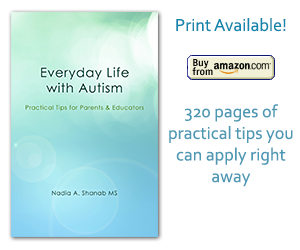Positive Education
Nadia Shanab | general advice, Uncategorized16 Oct 2013
Happiness is not something ready made. It comes from your own actions. Dalai Lama
Research shows that people are becoming less happy, less fulfilled and less satisfied over the last two generations. Fifty years ago depression was known to affect people over thirty; now even children in elementary schools and adolescents are suffering from depression. The research also shows that being in a bad mood affects the learning process.
Students in a good mood have the ability:
- to think creatively
- to become problem-solvers
- to make decisions
- to capture new concepts easily
- to see the bigger picture (conceptualize)
- to have broader and longer attention span
- to be more resilient
What a great recipe to thrive and flourish!
Contrarily, students in a bad mood, depressed or unhappy become:
- followers
- defensive
- unco-operative
- inefficient
- have a narrow and short attention span
Naturally, this would result in less achievement, and consequently even more disatisfaction. It is a vicious cycle.
Our modern life is rich in top technology and all the means that help us get our daily chores easier and faster to be done. But ironically, life became more challenging and stressful. Parents cannot spend enough time with their children, both parents have to work to provide for the family needs. Families are living far apart, which makes the social and moral support weaker. Divorce became a common practice. The electronic social networks have replaced the physical human network. There is less time left to enjoy life.
Therefore, to improve children’s quality of life “well-being” should be taught in school. It is never enough to emphasize the importnace of:
- identifying each student’s strengths
- use these strengths consistently to develop them
- promote resilience and positive emotions
- promote positive and social relationships
- teach students to have a meaningful and purposeful life
Keeping a journal is a very important activity to help students express, reflect and visualize their thoughts, ideas and hopes.
Here are examples given by the Strath Haven Positive Psychology Curriculum:
Three-Good Things Exercise
Have the students write about three good things (small or big) that happend to them every day for one week. They also need to write about
- why these good things happened
- what does that mean to them
- how to make this happen more often
Using Signature Strengths in New Ways:
Here are some values recognized in all cultures of the world
- honesty
- loyalty
- perseverence
- creativity
- kindness
- wisdom
- courage
- fairmess
- happiness
- integrity
- peacefulness
- consideration
- respectability
- humanity
- sensitivity
- optimism
- sharing
- patience
- truthfulness
- industriousness
- sincerity
- commitment
- balance
- justice
- understanding
- purposfulness
- appreciation
- dutifulness
- focus
- charity
- nonviolence
- compassion
- independence
- morality
- nurturing
- openness
- modesty
Work with your students to help them identify their strengths/values, then help them apply and use their values in everyday life. They will develop a lot of skills and will become happier and more fulfilled. Now they are motivated and ready to enjoy learning!
School should have two missions:
1- prepare indiviuals for the workplace
2- promote and raise well-being
Accomplishment of both missions will produce highly-effective and happy generations.
Read the great article by the founder of the positive psychology, Dr. Seligman and other professors of the Penn University.
Tip
Remember to always break down a big problem into smaller ones, then solve one sub-problem at a time.
Remember: a positive classroom environment is contagious, both students and staff will benefit.
nadia shanab
Tags: asperger's syndrome, autism, communication, consequences, discipline, early intervention, flexibility, health, independence, mental illness, organization, parenting, placement, positive psychology, research, schedule, senses, sensory, tips
